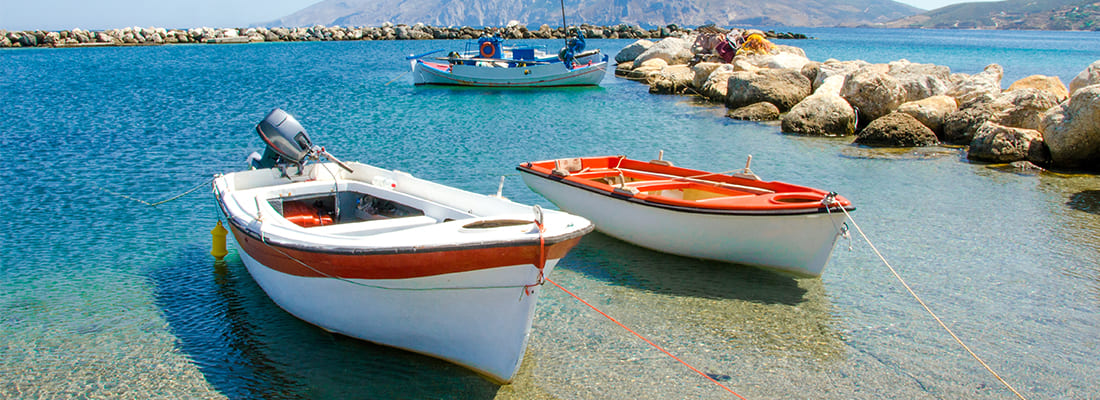Can plastic boats be recycled?
Following-up on our recent article about ‘End-of-Life Boats’ (ELB’s), here we will go over some details about processes, which will actually take composite (GRP) hull sections and turn them into something else that is commercially usable.
A global industrial challenge in waiting…
It is a fact that composite materials, with all of their associated indestructible light weight / high durable qualities, are by no means unique to the boating industry. So in a broader sense, the industrial world has to develop more end-of-life solutions for them anyway, and sooner rather than later!
A report from Composites UK published last year, indicates that the use of composite products is growing rapidly across all industrial sectors, from transportation, construction, wind energy and aerospace, through to consumer goods, with only 5% being used in marine applications. But overall, this means that the global market for composites is expected to reach $95bn globally by 2020, an increase of 40% from 2014!
Unique challenges posed by GRP with its glass fibre reinforcement.
The same report specifically mentions glass-reinforced polymers (GRP) being used in millions of boat hulls around the world. It says that they are the most economically challenging when it comes to finding commercially viable recycling solutions, and it estimates that GRP end-of-life waste is likely to reach around 50-60kT in the UK alone!
Composites UK say that currently the most promising route for end-of-life applications of GRP is to co-process with refuse derived fuel in cement kilns, and that the regrind from manufacturing waste can be incorporated in various processes including spray-up, casting and moulding, thus providing some reinforcement value from short fibres or flakes.
Several composite recovery processes have been trialled by various universities and research institutes, and some have been adopted on a limited industrial scale. These include:
- Mechanical grinding and sieving (for use as a filler in other compounds.),
- Pyrolysis (degrading the resin matrix at high temperatures)
- Solvolysis (using heated solvents to break down the resin and release the fibre strands)
- The previously mentioned cement kiln method, which is also the one currently recommended by the
- European Composites Industry Association (EuCIA)
There is hope…Italian process developed with ELB’s in mind.
Italy, like all European maritime nations, has its fair share of composite boats coming to end-of-life in their thousands over the coming years, and they are pushing ahead with an exciting ‘Composite Upcycling’ project, which has been developed in cooperation with the National Institute for Polymers, Composites and Biomaterials (IPCB.)
After the GRP hull has been chopped-up and reduced to manageable sections, this is how it works:
The fibreglass is ground and combined with polystyrene type polymers (another commonly and widely available waste material from packaging etc.) It is then combined with a surfactant and heat-treated at a relatively low temperature (as compared to incineration).
The result is a new inert composite that can be used either as pellets to produce moulds (for example, computer casings), or in sheets to make furnishing accessories (for example, luxury kitchen tops, or new material for flooring, etc).
The waste GRP material is thus re-inserted into the production cycle without being destined for landfill disposal, or a high-energy reduction process.
An additional benefit is that the new compound is a thermoplastic material, and therefore at the end of its new life-cycle, it can be recycled once again.
And the latest news is, that under the EU funded 2020 project, UCINA is going ahead with the first pilot plant set-up in Southern Italy, specifically for recycling material from GRP boats…so, watch out for this!
And more hope… A Dutch University presents another alternative. The Polymer Engineering faculty of Windesheim Applied Sciences University in the Netherlands, established that at least 7500 tonnes of end-of-life thermoset composite materials are being produced every year in the country, and 1400 tonnes of this is estimated to come from the disposal of boats, which is a figure set to continue growing!
So the department under the professorship of Dr.lr. Albert Ten Busschen, are developing an ‘upcycling’ method, which would put this waste material to good use.
The Windesheim concept does not involve grinding or shredding the GRP sections into small flakes, but cuts them into long strips, which are then converted into a new composite material under a vacuum infusion process.
The end result produces a panel, which can be used to build retaining walls for the banks of canal and rivers, of which there are thousands of miles in the Netherlands.
Historically, the most commonly used material for this application has been tropical hardwood, and under test conditions, the upcycled GRP panels have been shown to be competitive on cost and superior on service life(>60 years, compared to >20 years for hardwood).
History reminds us that necessity is the mother of invention and these ideas were unheard of just a few years ago. There are also several other GRP recycling processes already in existence, so we have cause for optimism.
So what do you think? Do we have good reasons to be optimistic? Do you have comments, experiences, or case stories to share? Are we ever going to climb this mountain?
Please leave your input in the comment box below, many thanks for your interest.
Share your stories on leisure marine industry with us
Do you have an innovation, research results or an other interesting topic you would like to share with the leisure marine equipment industry? The METSTRADE website and social media channels are a great platform to showcase your stories! Let us know via metstrade@rai.nl
Are you a METSTRADE exhibitor?
Make sure you add your latest press releases to your Company Profile in the Exhibitor Portal for free exposure.





